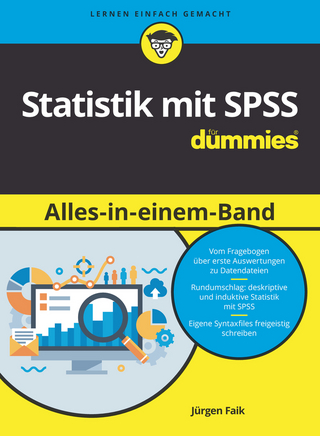
Qualitative Data Analysis with NVivo
SAGE Publications Ltd (Verlag)
978-1-4462-5655-8 (ISBN)
- Titel erscheint in neuer Auflage
- Artikel merken
Lecturers/instructors only - request a free digital inspection copy here
This straightforward, jargon-free book provides an invaluable introduction to planning and conducting qualitative data analysis with NVivo. Written by leading authorities, with over 40 years combined experience in computer-assisted analysis of qualitative and mixed-mode data, the new edition of this best selling textbook is an ideal mix of practical instruction, methodology and real world examples.
Practical, clear and focused the book effectively shows how NVivo software can accommodate and assist analysis across a wide range of research questions, data types, perspectives and methodologies. It sets out:
The power and flexibility of the NVivo software
How best to use NVivo at each stage in your research project
Examples from the authors′ own research and the sample data that accompanies the software, supplemented with vignettes drawn from across the social sciences
Annotated screen shots
A website with links to data, sample projects, supplementary/updated instructions, and SAGE journal content
This second edition contains new chapters on handling a literature review, visualizing data, working in mixed methods and social media datasets, and approaching NVivo as a team. An insightful step-by-step guide to the messy reality of doing computer-assisted analysis, this successful book is essential reading for anyone considering using NVivo software.
Pat Bazeley is Director of Research Support P/L and Adjunct Professor in the Translational Research and Social Innovation Centre at Western Sydney University. Since graduating in psychology, she has worked in community development, as an evaluation researcher, and in academic research development. For almost 30 years Pat has been providing research training and project consulting to academics, graduate students and practitioners representing a wide range of disciplines across Australia and internationally. Her particular expertise is in helping researchers to make sense of qualitative, survey, and mixed methods data, and to use computer programs for management and analysis of data. Pat’s research has focused on qualitative and mixed methods data analysis, the development and performance of researchers, and the wellbeing of older women. She has published books, chapters, and articles on mixed methods and qualitative data analysis. She serves on the Editorial Board of the Journal of Mixed Methods Research and was 2015–2016 President of the Mixed Methods International Research Association. Dr Kristi Jackson focuses on the use of NVivo in a diverse array of health, education, public policy and corporate/commercial research via her role as consultant, coach, analyst, and principal investigator. With over 25 years of experience in qualitative research design, data collection, analysis, reporting, and stakeholder relations, she is an expert in a diverse array of qualitative methodologies. Kristi’s theoretical frames tend to be sociological and her research interests include conceptualizations of qualitative research transparency and the constantly changing spaces where qualitative researchers and technologies meet.
Perspectives: Qualitative Computing and NVivo
Qualitative Research Purposes and NVivo
The Evolution of Qualitative Data Analysis Software
Issues Raised by Using Software for Qualitative Data Analysis
Exploring an NVivo
Overview: What′s in an NVivo Project?
Starting Out, With a View Ahead
Exploring the Research Terrain
Explore the Terrain With Software
looking Ahead: Connecting a Web of Data
Looking Ahead: Keeping Track of Emerging Ideas
Memos, Annotations or Links: Which Should it Be?
Saving and backing Up Your Project
Designing An NVivo Database
Qualitative Data for Your Project
Thinking Cases
Preparing Data Sources
Storing Qualitative Data in NVivo
Managing Data Sources in NVivo
Questions to Help You Work Through These Early Phases
Coding Basics
Goals for Early Work With Data
Building Knowledge of the Data Through Coding
Storing Codes in Nodes
Identifying and Naming Codes
Further Coding in NVivo
Practical Issues in Coding
Moving On
Going On With Coding
Creating a Structured Coding System
Organizing and Coding With Nodes in Trees in NVivo
Automating Routine Coding
Automating Coding With Word Frequency and Text Search Queries
Closeness and Distance with Coded Data
Moving On
Cases, Classifications, and Comparisons
Understanding Case Types and Case Nodes
Making Case Nodes
Understanding Attributes, Values and Classifications
Creating Classifications, Attributes, and Values
Using Attributes for Comparison
Using Sets to Manage Data
Overview
Working With Multimedia Sources
The Promises and Perils of Non-Text Data
Using Images in Your Research
Working With Audio and Video Sources
Accessing and Using Web-Based Data
Exporting Images, Audio and Visual
Adding Reference Material to Your NVivo Project
Using Reference Material in Your Project
Importing; Coding and Viewing PDF Sources
Importing Reference Material from Bibliographic Software
Capturing Web Pages with NCapture
Datasets and Mixed Methods
Combining Data Types in Research
What Does a Dataset Look Like?
Managing Data in a Data Set
Coding Dataset Text
Importing and Analysing a Social Media Data Set
Analysing Datasets and Other Mixed Data Types
Tools and Strategies for Visualizing Data
Why Visualise?
Case Analysis Using Models
Grouping and Conceptualizing
Comparative Analysis with Charts and Graphs
Explore Relationships Via the Modeller
Build a Visual Narrative
Mapping Connections - Building Theory
Exploratory Visualization Using Cluster Analysis
Exporting Models and Visualizations
Concluding Comments
Using Coding and Queries to Further Analysis
The Analytic Journey
Queries in NVivo
Common Features in Queries
Seven Queries
Using Coding and Queries to Further Analysis
Creating and Customizing Reports
Teamwork with NVivo
Getting Ready For Teamwork
Options for Storing and Accessing a Team Project
Getting Started as a Team with NVivo
Using NVivo′s Tools to Facilitate Team Communication
Coding as a Team
Combining Databases
Comparing Coding by Different Researchers
Moving On - Further Resources
| Verlagsort | London |
|---|---|
| Sprache | englisch |
| Maße | 170 x 242 mm |
| Gewicht | 710 g |
| Themenwelt | Mathematik / Informatik ► Mathematik ► Computerprogramme / Computeralgebra |
| ISBN-10 | 1-4462-5655-3 / 1446256553 |
| ISBN-13 | 978-1-4462-5655-8 / 9781446256558 |
| Zustand | Neuware |
| Informationen gemäß Produktsicherheitsverordnung (GPSR) | |
| Haben Sie eine Frage zum Produkt? |
aus dem Bereich



